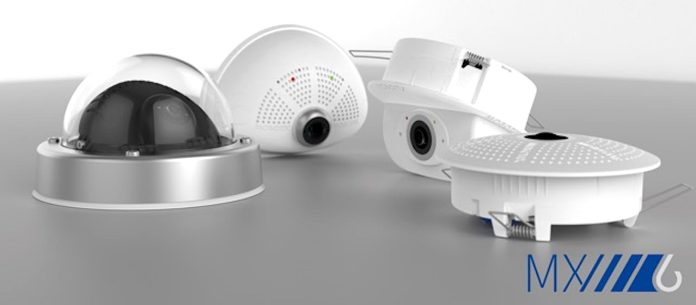MOBOTIX has introduced new compact indoor models c26, i26, p26 and v26, completing the Mx6 6MP camera line.
The new, higher performing processor in the MX6 range delivers up to twice as many images per second as before – at the same resolution. The video data is simultaneously offered in three formats (MxPEG, MJPEG and H.264), as well as in a range of different resolutions. RTSP/multicast makes the Mx6 cameras more flexible. All of the models come standard with intelligent motion detection directly on the camera, and thereby offer more capacity for additional software applications.
As well as a more powerful CPU, Mx6 indoor models also offer an H.264 encoder. The new processor architecture significantly increases the frame rate, which allows the cameras to do an even better job of capturing fast movements. Moreover, intelligent motion detection is integrated as a standard, and more capacity is available on the camera for additional software applications. The new Mx6 camera system is far more flexible and higher performing, thanks to RTSP/Multicast. The video stream can be displayed on multiple clients simultaneously without reducing the frame rate.
Alongside the MxPEG video codec, which was specially developed for security applications, H.264 is available for the first time, ensuring compatibility with the industry standard. Depending on requirements, the focus can be set on high image quality with MxPEG, or the industry standard for video transmission and camera integration can be used. Mx6 cameras also offer basic ONVIF functions. The cameras are compact – 12cm in diameter and weighing only 200g.
“We will continue to remain true to our decentralized concept – storing maximum intelligence in a camera – and thereby offer solutions that go above and beyond traditional applications,” explains MOBOTIX CTO Dr. Oliver Gabel. “At the same time, we are open to generally used technologies such as H.264 and participation in standard forums such as ONVIF. We do not consider these two parts of our approach to be in conflict with each other; instead, they help our range prepare for the future and stay solution-oriented.”♦











